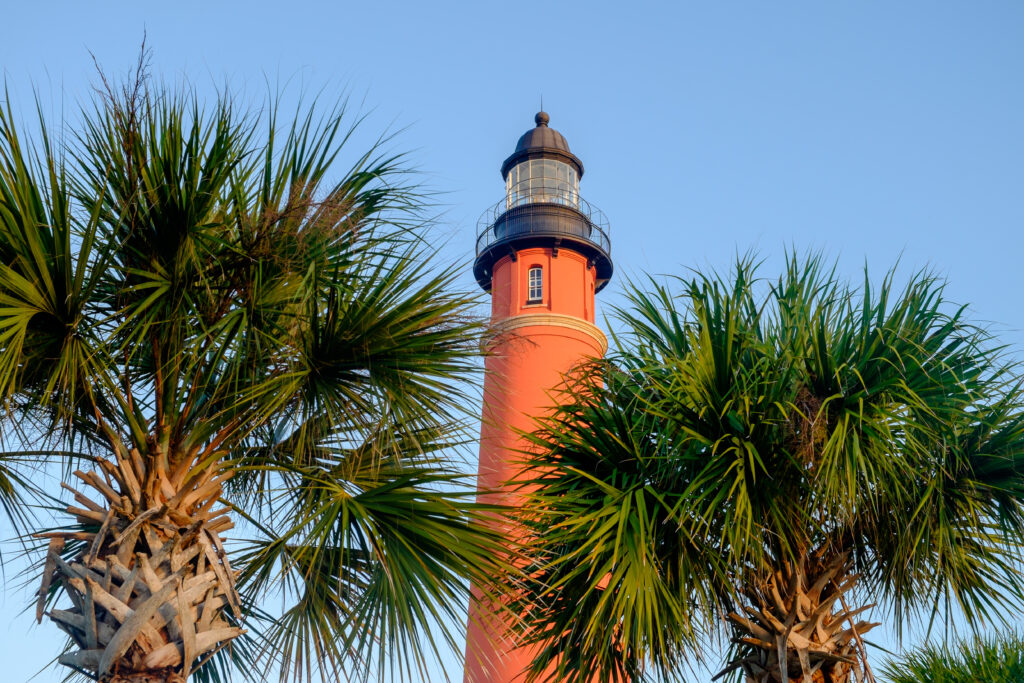From the lush shores of the Indian River, you spot it: tall, red and bold against the blue horizon, it’s the lighthouse you’ve heard all about.
While it’s a beautiful sight, of course, the Ponce de Leon Inlet Light is equally renowned for its historical significance. Now, this spring, to celebrate 20 years on the National Register of Historic Places, we’re climbing through history—exploring the ins and outs of Florida’s tallest lighthouse. Take a look.
A tale of two lights
More than one lighthouse has called Ponce Inlet “home.” In fact, back when the waterway was still called Mosquito Inlet—the name officially changed in 1927—a less successful forerunner was put up there, in 1835. Located on the inlet’s south end, this light never really got a chance to get into its stride. Oil for its lamp never arrived, a storm weakened its foundation, and it was attacked during the Second Seminole War. Eventually, it collapsed altogether—but there was still need for a light to guide the way at this tricky marine junction. In 1887, the solution—the tall, red light we know and love today—was completed.
The man behind the Inlet
The Mosquito Inlet Light changed its name when the waterway did—to the now-familiar “Ponce de Leon Inlet Light.” But who was Juan Ponce de Leon…and how did he help shape our state, and our beautiful shoreline?
For starters, our state would not know the name “Florida” if not for Ponce de Leon, who arrived here and dubbed the land La Florida, or Land of Flowers, noting the region’s lush landscape. He was said to have believed Florida was actually an island, and that he was in search of immortality via the fabled Fountain of Youth.
While the location of that legendary fountain proved, of course, to be elusive, the land itself did not; Ponce de Leon is believed to have landed somewhere on the state’s Atlantic coast. Some point to the St. Augustine area… others to the shores of what we now know as, fittingly, Ponce de Leon Inlet.
Exploring the Light today
When you’re not admiring the Light from land or water, you can actually climb it! At 175 feet high, it’s the state’s tallest light, a towering testament to our maritime history. You can even take the “Climb to the Moon” during full moons, a one-of-a-kind experience to enjoy every month. You can also explore the keepers’ dwellings, oil house and more during your visit.
Looking to experience the Ponce de Leon Inlet Light, and other Florida icons, like you never have before? See them up close and personal from a cruise with The Manatee! Call us today to learn more.

